|
|
|
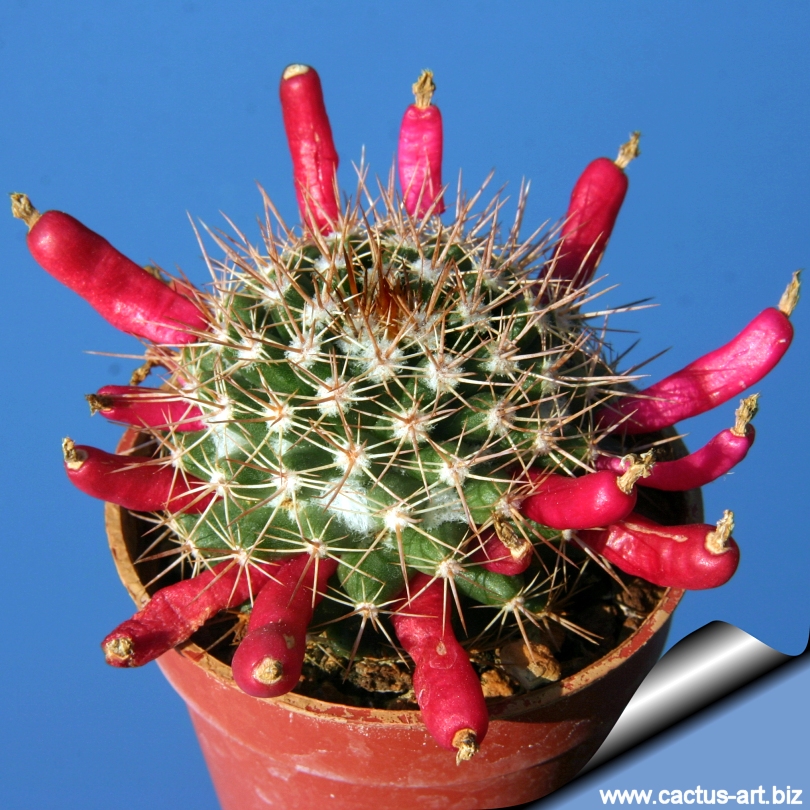
M. mammillaris along with M. colombiana
is one of only two South American species. The fruit are edible.
|
|
Description: Fairly slow
growing and usually solitary or forming clumps.
Stem: Globose to short cylindrical, light to dark green, shiny, 8
to 20 cm in diameter. With latex.
Tubercles: Tubercules in spiralled rows, ovoidal to conical up to
1 cm tall, parastichy number 8-13,
Axil: with no or few wool in the axil.
Areoles: Rounded with abundant white wool especially the younger
one..
Radial spine: Spreading, 6 - 16, yellowish-white to reddish
brown, becoming grey with age, 5 - 8 mm long.
Central spine: 3 - 5, reddish brown, with dark tips, later grey,
7 - 8 mm long, uppermost longest.
Flower: Diurnal, very small, inconspicuous, almost concealed
among the tubercles, funnelform, white, greenish, yellowish or creamy
white, 5 - 12 mm long.
Fruit: Club shaped, scarlet-red, 10 - 20 mm long, edible.
Seed: Small, brown, rough.
Blooming season (Europe): Late summer.
|
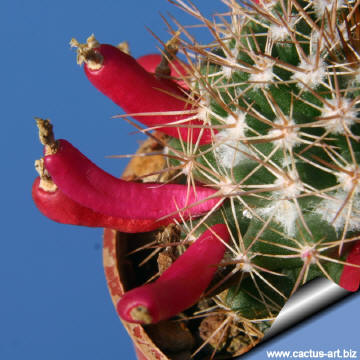 |
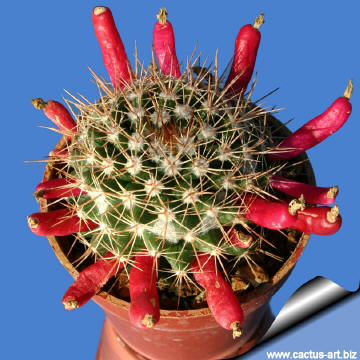 |
|
. |
|
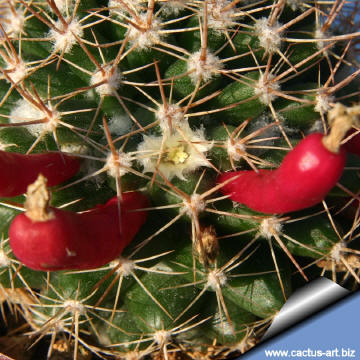
Flowers are
inconspicuous, greenish-white and |
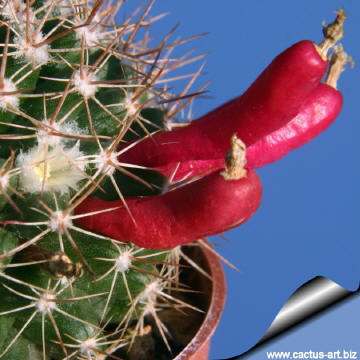
almost concealed and invisible among the tubercles. |
|
Advertising
|
|
|
|
|
Family:
Cactaceae (Cactus
Family)
Scientific name: Mammillaria mammillaris
(L.) Karsten
First description: by Link ex Pfeiffer 1953
Published in:
Enum. Cact. 11 (1837)
Origin: Coast of Venezuela and and the adjacent islands
(West Indies, Lesser Antilles, Trinidad, Tobago, Curasao and neighboring
islands of the Netherlands Antilles)
Habitat:
It is found in costal and
mountainous regions at medium altitude (up to 1.500 m) and do not
tolerate frost.
Conservation status: Listed in
CITES appendix 2.
Common Names include: Woolly Nipple Cactus
Synonyms:
- Cactus mammillaris Linnaeus
In: Sp. Pl. 1: 466 1753 (First description)
- Mammillaria simplex Haworth
Syn. PI. Succ. 177. 1812 (Illegittimate name)
- Mammillaria pseudosimplex Haage &
Backeberg 1961
(Not validly pubblished)
- Neomammillaria mammillaris
M. mammillaris is the
type species of the genus Mammillaria, which itself is
the
type genus of the tribe Cactaceae of the subfamily
Cactoideae of the Cactaceae.
In fact all cacti should be named "Mammilariaceae", but
the name Cactaceae has been conserved (Nomen
conservandum).
The generic name Mammillaria is also a nomen
conservandum, on one hand against Linné's genus cactus, on the other
hand, against an earlier homonym, the algae species Mammillaria.
Linneé's genus Cactus was soon given up, because it included too many
species unrelated to each other.
Etymology: The name derives from Latin “mammilla”
meaning nipple, referring to tubercles that are one the plant specific
features.
|
|
|
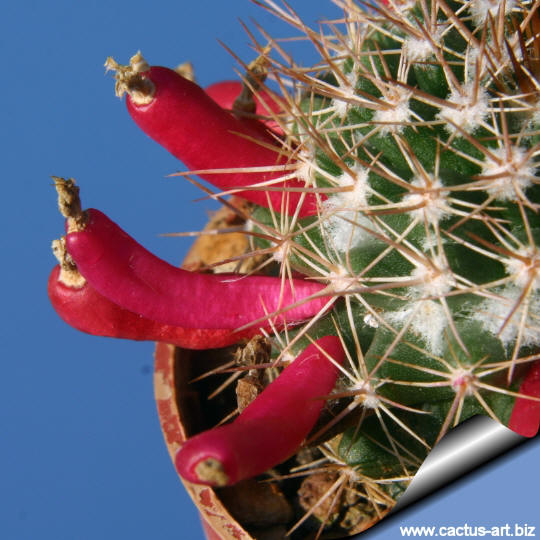
The bright red fruit contains seeds. You can plant these seeds to have
small Mammillaria mammillaris in the next few months.
Cultivation:
It is a relatively slow growing species.
Water regularly in summer, but do not overwater (Rot prone) Use pot with
good drainage and a very porous potting media, keep dry in winter.
Feed with a high
potassium fertilizer in summer.
Avoid any frost (Said to be one of the
least cold tolerant members of the genus). Reputedly sensitive to low
temperatures, but less so if kept on the dry side prior to,
and during, cold weather.
Seems to appreciate somewhat weaker light than most mammillarias, and it
will take on a reddish colour in bright light, which encourages
flowering and heavy wool and spine production.. Outside full sun or
afternoon shade inside it needs bright light,
and some direct sun.
Be careful when you repot Mammillaria mammillaris. Its spine is
sharp and hard. You should use gloves or wrap the cactus with thick
newspaper. They may make it easier.
Propagation: , Direct sow after
last frost or division of
larger clups.

 |
|